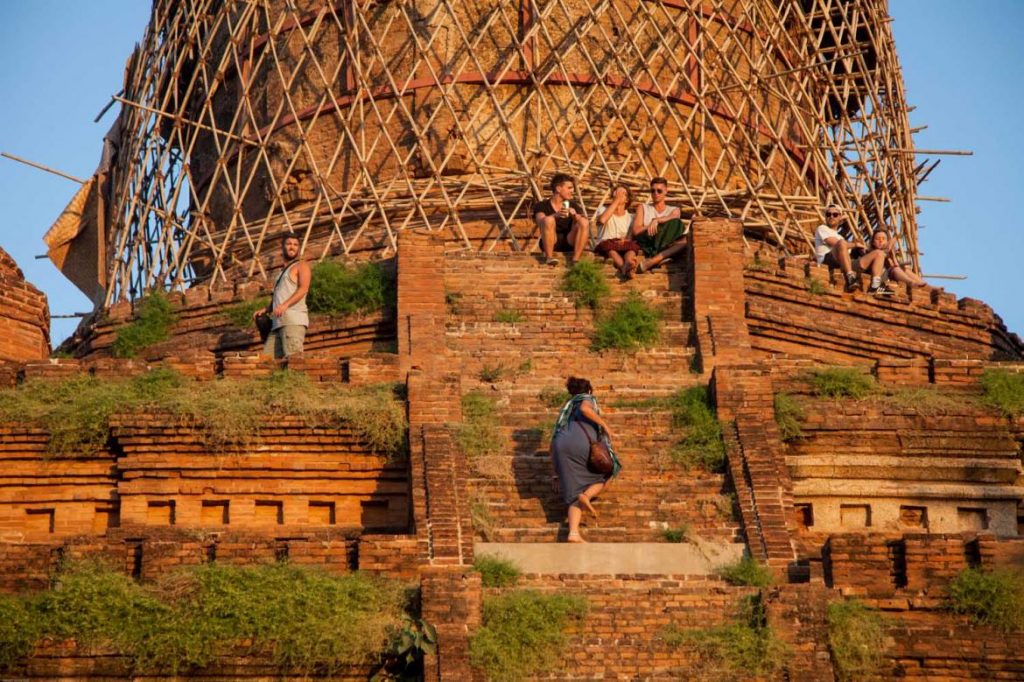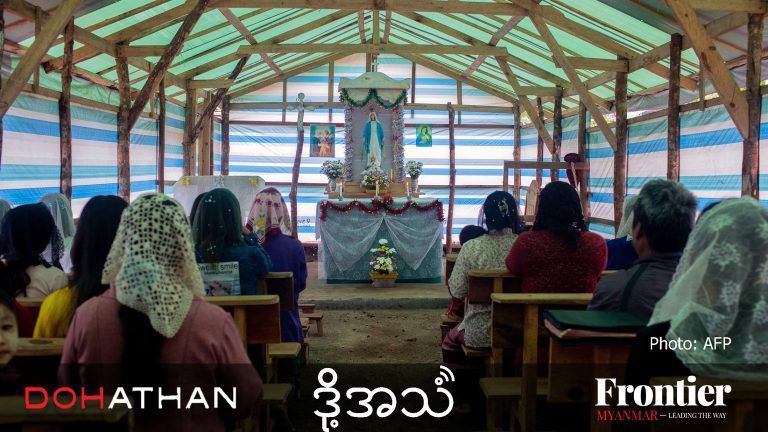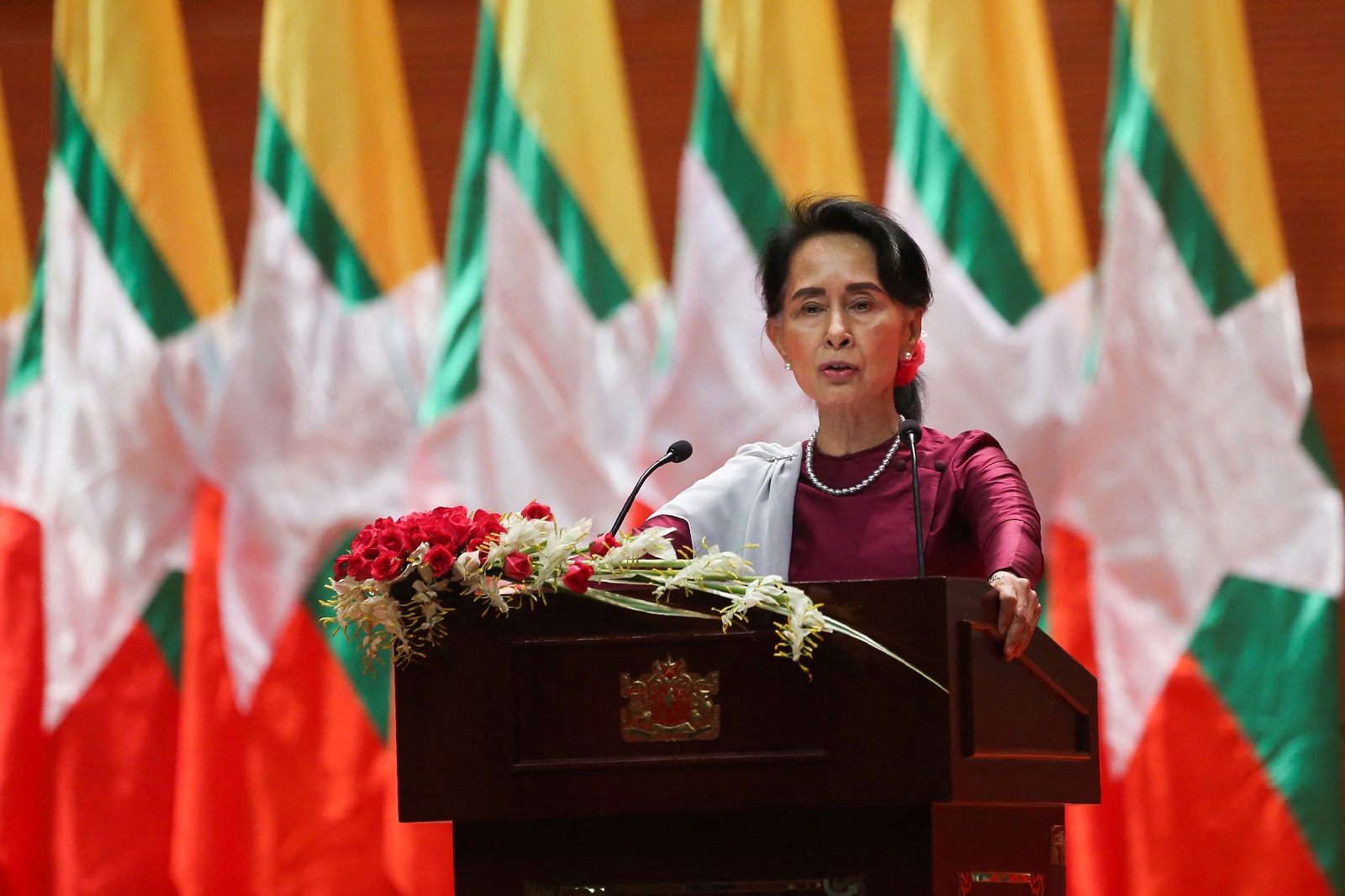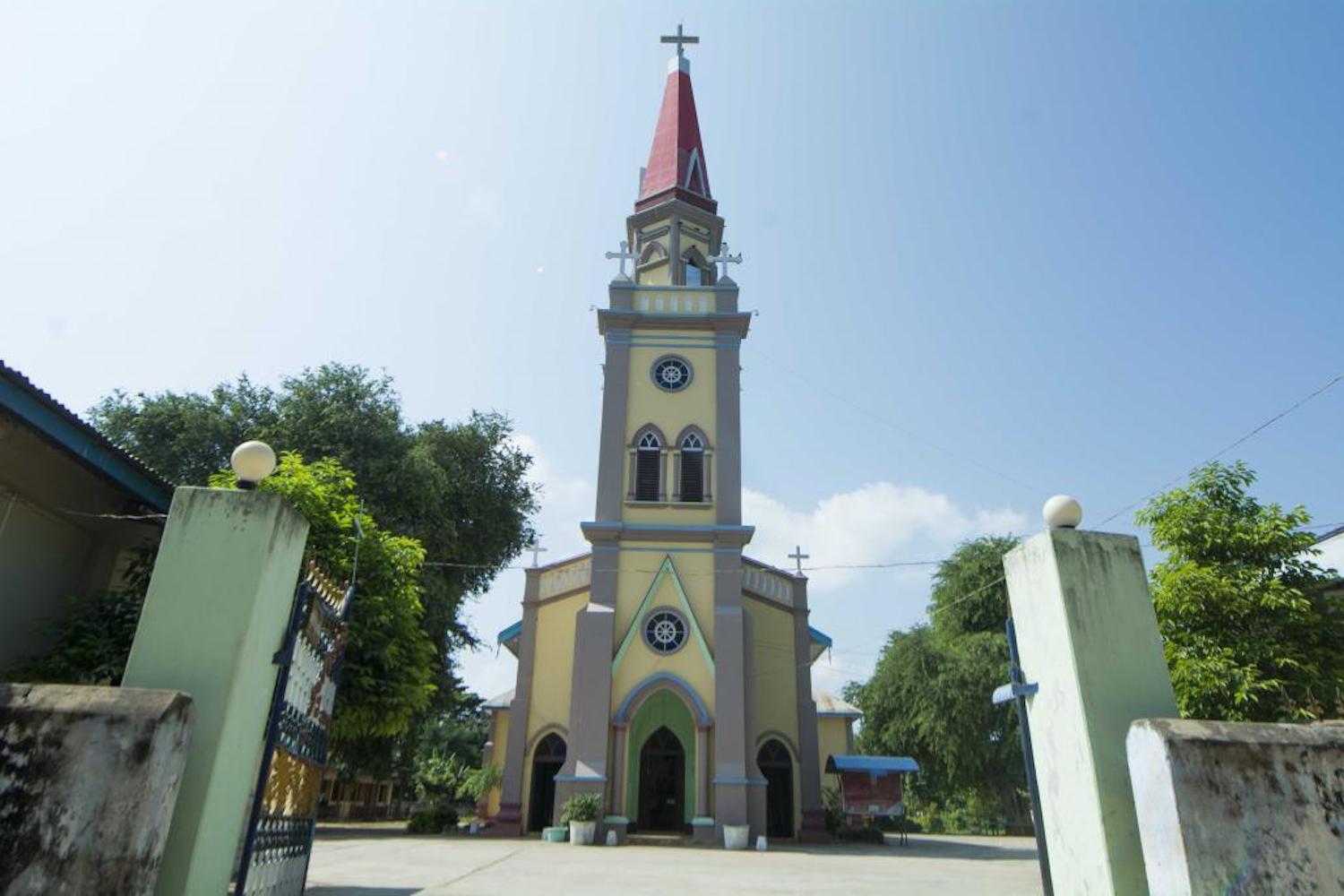Authorities are mulling a ban on climbing the site’s temples in order to protect them, but experts warn that such a move could have a negative impact on the country’s growing tourism industry.
By HTUN KHAING | FRONTIER
AS THE sun began its descent over the Bagan temples in late January, hundreds of visitors – both foreign and local – were making their way towards the Shwesandaw Pagoda. Dating back almost a thousand years, the white, terrace-style pagoda is renowned for being one of the best spots to catch Bagan’s famous sunset.
Most of the visitors had travelled thousands of miles to witness the sunset, which is regularly ranked as one of the world’s “must see” experiences.
But it could soon be a thing of the past. The government has said it is considering banning visitors from climbing the pagodas at the end of this year’s tourism season, in order to protect these ancient structures.
“Sunset and sunrise viewing on the temples can cause damage to the cultural heritage, and that is not suitable in the long-run and should be banned in the future,” State Counsellor Daw Aung San Suu Kyi said when she visited Bagan in January. She suggested building alternative structures for sunset and sunrise viewing and said any decision will “benefit the country in the long-term”.
jtms-sunset-02.jpg
Support more independent journalism like this. Sign up to be a Frontier member.
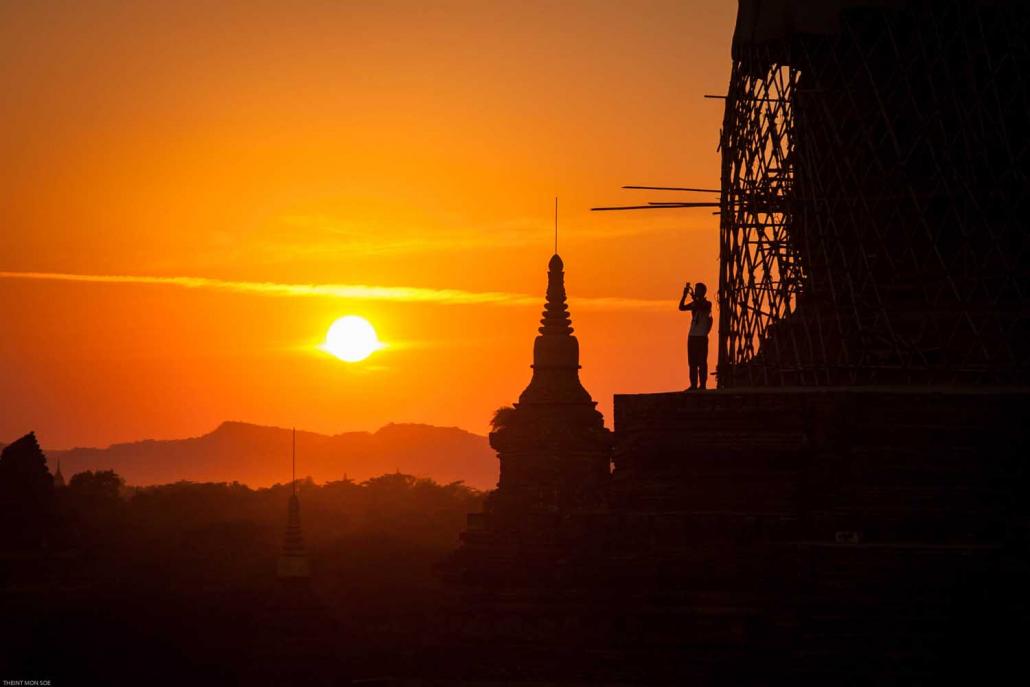
A foreign tourist takes a picture of the sunset at Bulethi Pagoda in Bagan, despite a ban on climbing the structure. (Theint Mon Soe — J | Frontier)
It is not the first time authorities have considered a ban. In February 2016 the Ministry of Culture barred visitors from climbing the monuments, but a day later said it had changed the ban to include only five pagodas. Both statements criticised visitors for “culturally disgraceful” acts including wearing inappropriate clothing, as well as dancing and sleeping on the monuments.
Calls for a ban have increased since a 6.8 magnitude earthquake struck central Myanmar in August 2016 and damaged about 200 of Bagan’s estimated 3,000 structures.
Six months after the earthquake authorities have restricted access at 21 buildings, which includes pagodas and temples. On some sites that remain open signs have been posted in English and Myanmar language warning visitors to take care.
jtms-sunset-03.jpg
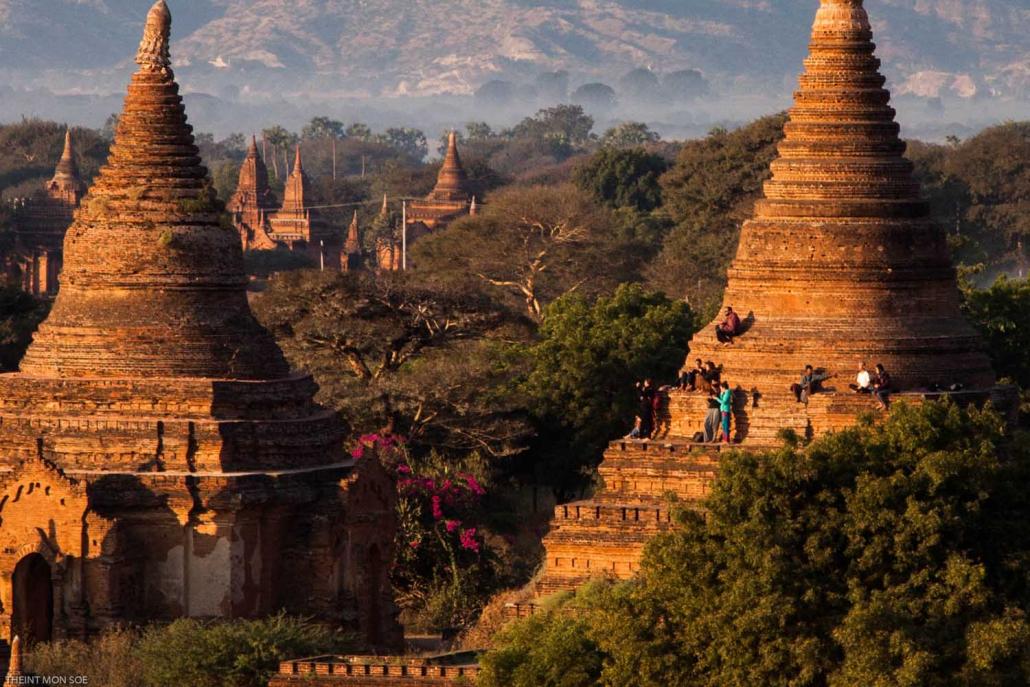
Tourists take photos of sunset from the top of Bulethi in late January, despite the authorities imposing a ban on climbing the pagoda following a 6.8 magnitude earthquake in August 2016. (Theint Mon Soe — J | Frontier)
The government said it needs to take measures to ensure that the structures, which are culturally and religiously significant in Myanmar, are not permanently damaged.
“Shwesandaw is almost 1,000 years old. It is in a worrisome state because the bricks used for the pagoda are very old,” said U Kyaw Oo Lwin, director general of the Department of Archaeology, National Museum and Library, under the Ministry of Religious Affairs and Culture.
“The government should take action regarding damaged pagodas and stupas in Bagan because some foreigners prioritise their wishes to climb the pagodas and watch the sunset regardless of the damage it does to the pagodas,” Kyaw Oo Lwin said.
Bulethi Pagoda was another popular sunset temple for visitors before September’s earthquake. The authorities banned visitors from climbing the pagoda due to the damage sustained in the disaster. But during a visit to Bagan in late January, Frontier witnessed about two dozen visitors defying “No Entry” signs and climbing Bulethi.
jtms-sunset-05.jpg
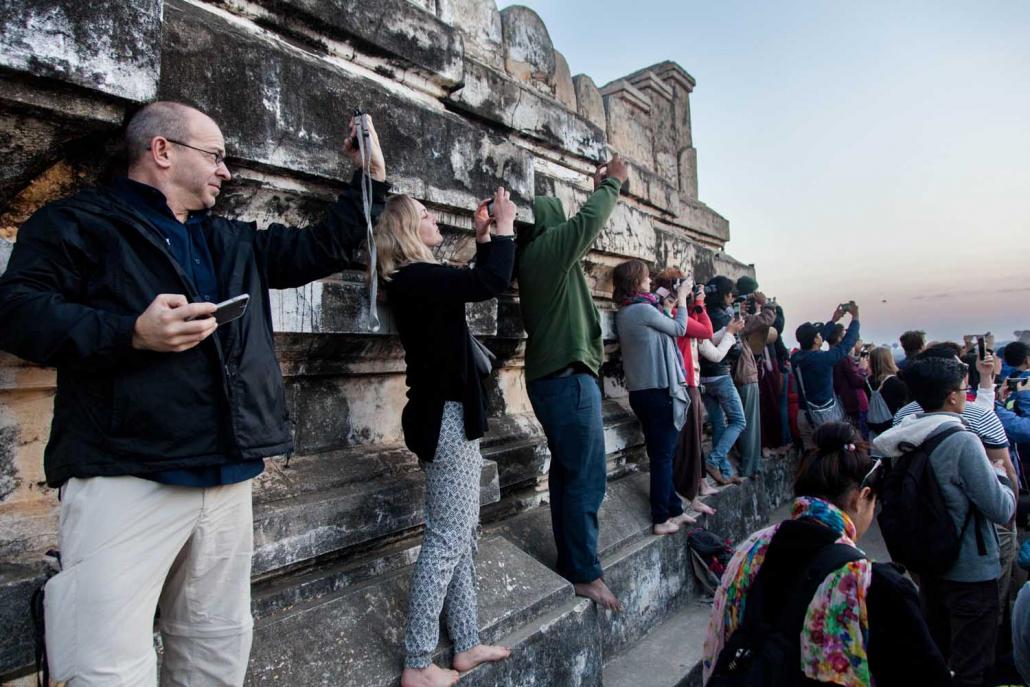
Tourists take photos of the setting sun from the famed Shwesandaw Pagoda. (Theint Mon Soe — J | Frontier)
About 750,000 tourists visited Bagan between 2014 and 2016, according to a statement from the Nyaung-U District General Administration Department, and almost US$14 million was earned from tourist entrance fees to the Bagan Archaeological Zone.
If the ban does go ahead, the government is considering building five “viewing platforms” at a cost of K360 million so that visitors can still enjoy the view, said U Soe Tint, the Nyaung-U District administrator.
Some foreign visitors at Bagan support the government’s plans.
“Tourists are more interested in taking photos of the sunset rather than watching the sunset,” said Mr Nicolas Mendez, a Turkish tourist visiting Bagan in January.
But some are concerned that such a move would have a detrimental impact on tourism at the sight.
“Foreigners want to watch the sunset from the top of a pagoda,” said Ko Than Htike, a tour guide at Bagan. “They don’t want to go to a tower that was built for them to watch the sunset.”
Experts have also urged the government to thoroughly think through any plans to ban visitors from climbing the pagodas.
“If climbing on the temples in Bagan is banned without due consideration for practical alternatives, it could have a significant negative impact on Myanmar’s tourism industry,” said Mr Marcus Allender, business development director for Yangon-based Pegu Travels.
“Bagan is well known as the jewel in Myanmar’s crown and both climbing the temples and the views afforded are a big part of the experience. So far convincing proposals for viewing that would satisfy the large numbers required have been thin on the ground.”
TOP PHOTO: Theint Mon Soe — J | Frontier


